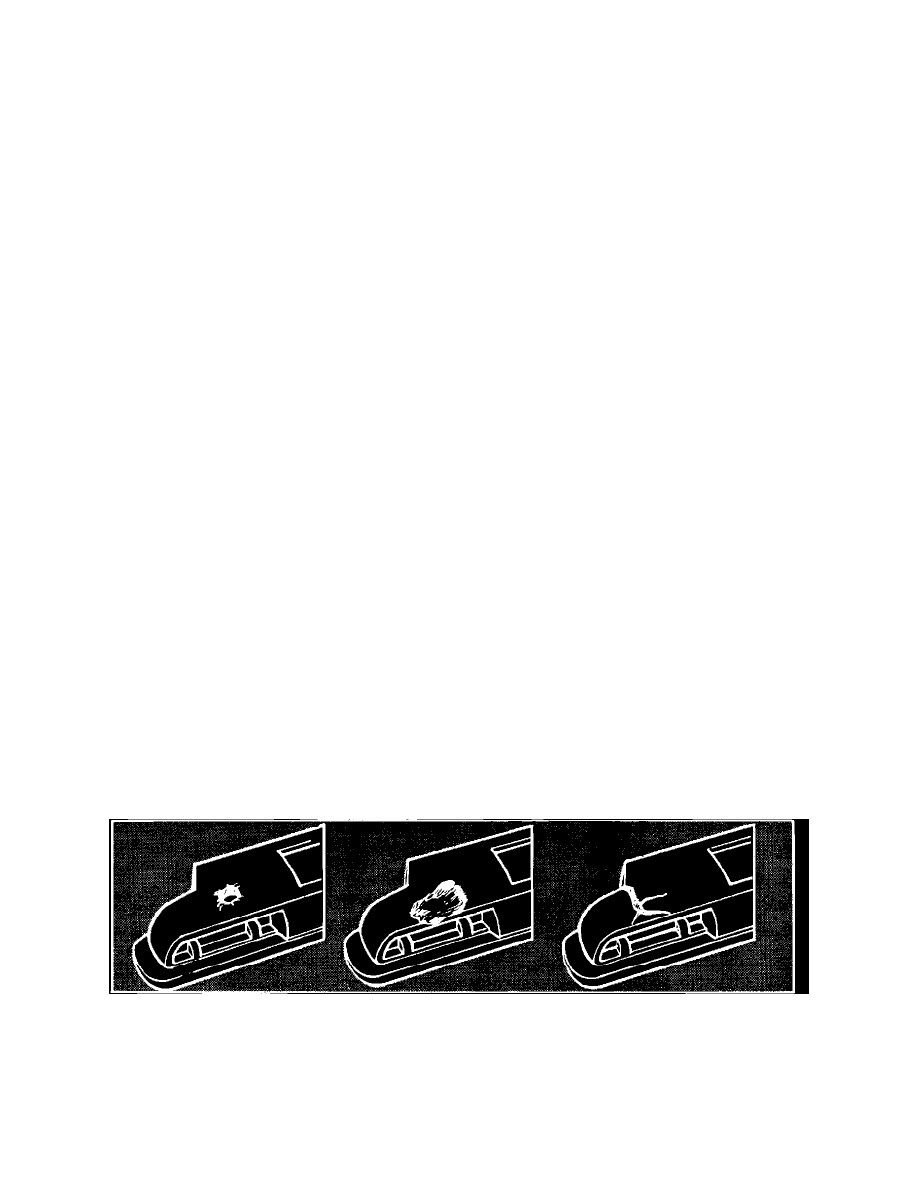Ranger 4WD L4-122 2.0L SOHC (1984)

Technical Service Bulletin # 83411
Date: 830222
Front Valance/Lower Body Molding - Service Procedures
Article No. 83-4-11
TRIM - EXTERIOR - FRONT VALANCE AND LOWER BODY SIDE COSMETIC
LIGHT TRUCKS 1984 BRONCO II
The new 1984 Bronco II vehicle will have an RPO large plastic front valance panel and will also have wide plastic lower body side mouldings. The parts
are moulded from an "LRM" Polyurethane Elastomer (similar to the existing "soft" fascias and bumper covers on other Ford/Mercury car lines) and can
be serviced in the same manner.
The valance panel and lower body side mouldings will be serviced in "prime". However, unless the part in question has been severely damaged,
satisfactory and economical cosmetic servicing can be accomplished using the techniques as noted and illustrated in this article. It should be noted that
the sketches are "broadly" typical to illustrate only the suggested techniques. Both older serviced and new "in prime" service parts can be painted using
appropriate air dry paints correctly mixed with Ford Motor Company Elastomeric paint products and applied in accordance with industry wide paint
procedures.
The following cosmetic servicing procedures can be used on the valance panel or any of the lower body side mouldings. Due to the relative ease with
which the parts can be removed it is suggested that the part(s) be "bunch" serviced. The first procedure "A" is appropriate to cuts or cracks. Procedure
"B" is used to service damages such as gouges, tears or punctures where substrate material is missing and fill material is required. Holes as large as
approximately three inches in diameter can be satisfactorily serviced. The location of damage must, however, be such that the back-up tape (3M Auto
Body Repair Tape Part No. 6930) or equivalent, will support the patch properly, and allow it to match the original contours of the panel.
Procedure "A" Information
PROCEDURE A - SUBSTRATE CUTS OR CRACKS (SUBSTRATE MATERIAL NOT REMOVED)
1.
Wipe service area with a Silicone and Wax Remover to assure clean surfaces.
2.
Apply a thin coating of 414 Adhesive (D7AZ- 19554-C) or equivalent to one surface of the cut or crack. Position the surfaces very carefully
together in their original position. Quickly and firmly press the
two surfaces together for at least one minute. Good bond strength is developed after one minute but maximum strength requires three to twelve hours
cure time. Note the precautions on adhesive container.
3.
If the part did not have paint damage and the part was properly positioned, painting may not be required. However, if painting is necessary,
proceed as follows: NOTE: Ford Motor Elastomeric service paint products or equivalent must be used with appropriate air dry paint to
safisfactorily refinish any flexible urethane part
a.
Scuff-sand the service area with a sanding block and No. 400 paper. Be careful not to sand through the color coat. Usually dulling the surface
is sufficient. Wipe off the service area with a clean, dry cloth.
b.
Wipe the sanded surface with a Silicone and Wax Remover.
c.
Refinish in accordance with usual paint refinishing procedures.
NOTE:
Elastomeric Additive (EBP-652-A) is for industrial use only by qualified personnel. It is not intended for the general public.
Procedure "B"
PROCEDURE "B" - SUBSTRATE HOLES, GAUGES AND TEARS (SUBSTRATE MATERIAL REMOVED)
Types of serviceable damage - NOTE: Figure shows typical soft grille opening panel, however similar damage can occur on valance panels or lower
body side mouldings.
